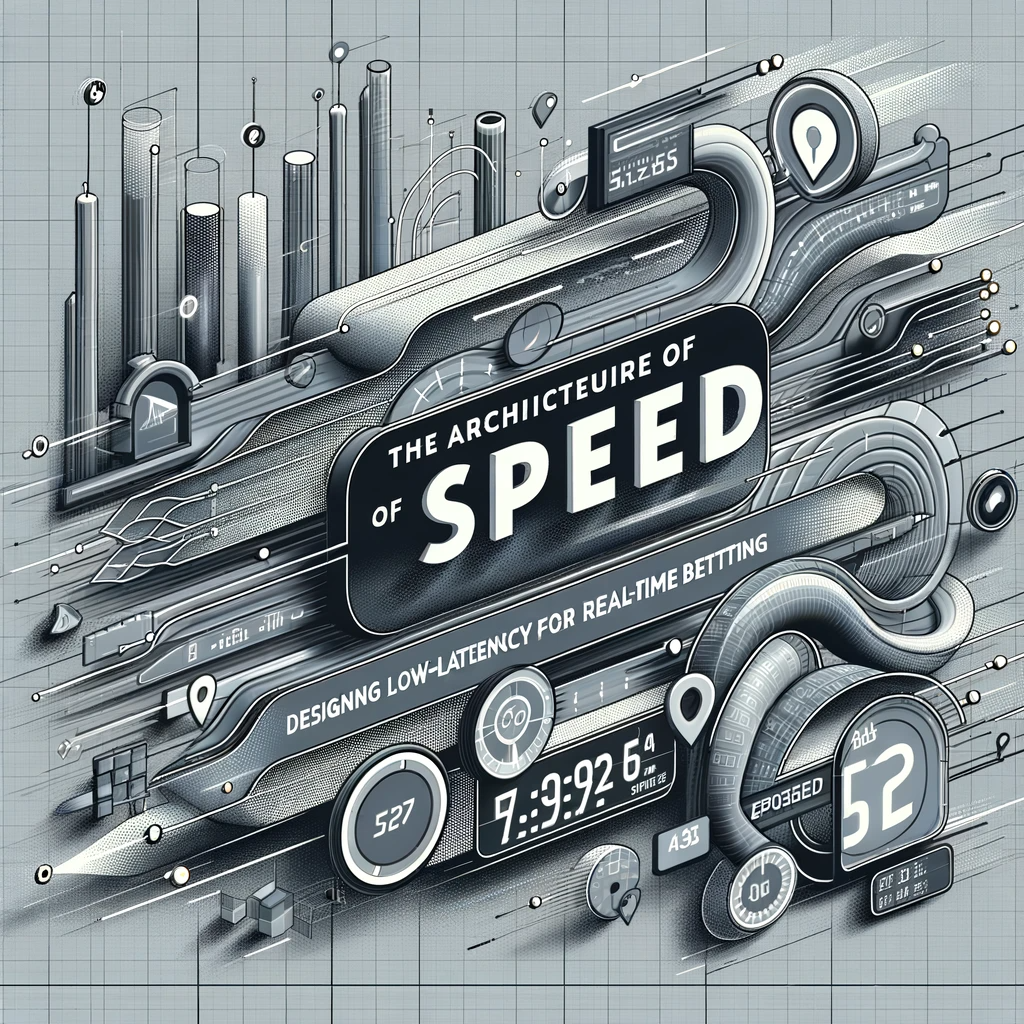| 3 Comments | John Doe

In the electrifying world of sports betting, every millisecond counts. The difference between a triumphant cheer and a resigned sigh can rest on the slender shoulders of latency. At Alphaline Sports, our mission is to give you the edge by pushing the boundaries of speed without compromising on the reliability you've come to trust.
The Need for Speed in Data Feeds
The essence of a successful bet often lies in the timely execution, informed by data that's as live as the game itself. That's where low-latency data feeds come into play. They are the unsung heroes in the background, the silent runners in the race against time, ensuring that the odds you see are as current as the game's latest play.
Building the Fast Lane: Our Approach
Our approach to creating lightning-fast data feeds begins with the choice of technology. We've adopted Rust – the language synonymous with performance and safety – as our bedrock. Rust enables us to develop systems that are not only rapid but also resilient to the crashes and vulnerabilities that plague less sturdy architectures.
The Cornerstones of Our Data Feed Architecture:
Streamlined Data Processing: We harness the power of event-driven architecture to process data with minimal latency. Our systems are designed to react to events as they happen, ensuring that data flows to you without a hiccup.
Distributed Systems: By spreading our operations across a global network of servers, we make geographical distance irrelevant. Whether the game is happening in your backyard or halfway across the world, the data arrives with the same swiftness.
Load Balancing: Intelligent load distribution ensures that no single node bears too much burden. This translates to consistent performance, even during the spikes in demand that major sporting events inevitably bring.
Failover Strategies: Redundancy is our silent guardian. In the rare event that a component falters, our architecture's design allows for an immediate switchover, maintaining an uninterrupted flow of data.
Optimized Data Storage: Using a combination of in-memory databases like Redis and time-series databases, we provide rapid access to historical and real-time data. This allows for swift retrieval and analysis, powering the complex algorithms that offer predictive insights.
The Tech That Drives the Bets
Event-Driven Design: A Symphony of Reactive Systems
Our data feeds are built on an event-driven architecture, designed to react to game events in real-time. Consider a football match where a goal is scored. Our system doesn't wait for a manual update. Instead, it's architecturally wired to respond to the 'goal' event the moment it's detected by our network of sensors and data partners.
Handling Ambiguities with "POSSIBLE" and "CONFIRMATION"
Here's where it gets interesting. For significant events, we issue a "POSSIBLE" event, which triggers our systems to preemptively simulate the subsequent changes. This could be a shift in odds or an update to player stats. We cache these anticipated changes and wait for a "CONFIRMATION" event. Upon confirmation, we release the cached data to our clients instantly. If the event isn't confirmed, we discard the cache, ensuring that our data remains pristine.
At Alphaline Sports, we are not content to rest on our laurels. Our teams are continuously innovating, finding new ways to shave off microseconds, because in the world of betting, time isn't just money—it's everything.
Microservices and the Modular Approach
Our backend is a constellation of microservices, each responsible for a slice of the data delivery pipeline. This modular approach means if we're tweaking the odds calculation service, it won't ripple out to affect the in-play betting statistics. It allows us to update and scale individual services without taking down the system—a crucial factor in an industry where uptime is non-negotiable.
The Role of Rust in Our Stack
Rust is the spine of our operation. In a landscape littered with the carcasses of systems that couldn't handle the load, Rust stands tall. It's type-safe, memory-safe, and abhors the null pointer dereferences and data races that plague other systems. With Rust, our latency is not just low; it's consistent, and our uptime, legendary.
The Data Store: A Dance of Redis and TimescaleDB
For data storage, we employ a dual-database strategy:
Redis: Our in-memory data structure store handles the ephemeral, the fleeting—like odds that change with every pitch in a baseball game.
TimescaleDB: This is where we store the heartbeat of the past—every stat, every event, every bet. As a time-series database, it allows us to query historical trends and make predictive analyses that feed back into the odds we offer.